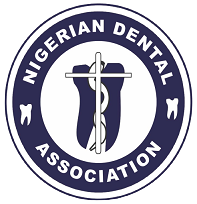Aggressive Periodontitis: A case report with exome sequencing and functional characterization of identified variant
DOI:
https://doi.org/10.61172/ndj.v32i2.282Keywords:
Genomics, craniofacial biology/genetics, Aggressive periodontitis, Bioinformatics, Bone loss, Molecular geneticsAbstract
Aggressive periodontitis (AgP) is characterized by rapid and progressive destruction of the periodontal tissues and eventual tooth loss. Genetic risk contributions have been explored and rare mutations in NOD2 were reported. Sequencing analysis of the coding regions of NOD2 was conducted using individuals of African ancestry, to identify the pathogenic protein-altering variants in individuals with AgP using: 1) In Silico tools and clinical variant classification system; 2) IF staining to understand the expression pattern, and 3) In vitro cell based assay to understand the variant protein function. We discovered a novel nonsense NOD2 variant (c.835G>T; p.Glu279Ter) ; a truncating protein variant that is clinically pathogenic, and the gene-product lacks domains regulating inflammatory responses. Murine studies suggest that this gene contributes to tooth development. In vitro analysis suggests a dominant-negative effect of the variant. NOD2 gene is expressed in the immune cells and periodontal tissues and regulates the inflammatory response within this tissue. This truncating variant found in one African family, which results in a dominant-negative effect, could explain the exacerbated immune response to pathogens in the pathogenesis of this periodontal disease.
Downloads
References
Caton JG, Armitage G, Berglundh T, et al. A new classification scheme for periodontal and peri-implant diseases and conditions - Introduction and key changes from the 1999 classification. J Periodontol 2018;89 Suppl 1:S1-S8.
Bouziane A, Hamdoun R, Abouqal R, Ennibi O. Global prevalence of aggressive periodontitis: A systematic review and meta-analysis. J Clin Periodontol 2020;47:406-428.
Ustaoğlu G, Göller Bulut D, Gümüş K, Ankarali H. Evaluation of the effects of different forms of periodontal diseases on quality of life with OHIP-14 and SF-36 questionnaires: A cross-sectional study. Int J Dent Hyg 2019;17:343-349.
Fine DH, Kaplan JB, Kachlany SC, Schreiner HC. How we got attached to Actinobacillus actinomycetemcomitans: A model for infectious diseases. Periodontol 2000 2006;42:114-157.
Boughman JA, Astemborski JA, Suzuki JB. Phenotypic assessment of early onset periodontitis in sibships. J Clin Periodontol 1992;19:233-239.
Schaefer AS, Bochenek G, Manke T, et al. Validation of reported genetic risk factors for periodontitis in a large-scale replication study. J Clin Periodontol 2013;40:563-572.
Sudo T, Okada Y, Ozaki K, et al. Association of NOD2 Mutations with Aggressive Periodontitis. J Dent Res 2017;96:1100-1105.
Armitage GC. Development of a classification system for periodontal diseases and conditions. Ann Periodontol 1999;4:1-6.
Adzhubei IA, Schmidt S, Peshkin L, et al. A method and server for predicting damaging missense mutations. Nat Methods 2010;7:248-249.
Kumar P, Henikoff S, Ng PC. Predicting the effects of coding non-synonymous variants on protein function using the SIFT algorithm. Nat Protoc 2009;4:1073-1081.
Venselaar H, Te Beek TA, Kuipers RK, Hekkelman ML, Vriend G. Protein structure analysis of mutations causing inheritable diseases. An e-Science approach with life scientist friendly interfaces. BMC Bioinformatics 2010;11:548.
Eliason S, Su D, Pinho F, et al. HMGN2 represses gene transcription via interaction with transcription factors Lef-1 and Pitx2 during amelogenesis. J Biol Chem 2022;298:102295.
Hong L, Sharp T, Khorsand B, et al. MicroRNA-200c Represses IL-6, IL-8, and CCL-5 Expression and Enhances Osteogenic Differentiation. PLoS One 2016;11:e0160915.
Krongbaramee T, Zhu M, Qian Q, et al. Plasmid encoding microRNA-200c ameliorates periodontitis and systemic inflammation in obese mice. Mol Ther Nucleic Acids 2021;23:1204-1216.
Genco CA, Van Dyke T, Amar S. Animal models for Porphyromonas gingivalis-mediated periodontal disease. Trends in Microbiology 1998;6:444-449.
Maeda S, Hsu LC, Liu H, et al. Nod2 mutation in Crohn's disease potentiates NF-kappaB activity and IL-1beta processing. Science 2005;307:734-738.
Negroni A, Pierdomenico M, Cucchiara S, Stronati L. NOD2 and inflammation: current insights. J Inflamm Res 2018;11:49-60.
Kunsch C, Rosen CA. NF-kappa B subunit-specific regulation of the interleukin-8 promoter. Mol Cell Biol 1993;13:6137-6146.
Fritz JH, Girardin SE, Fitting C, et al. Synergistic stimulation of human monocytes and dendritic cells by Toll-like receptor 4 and NOD1- and NOD2-activating agonists. Eur J Immunol 2005;35:2459-2470.
Sugawara Y, Uehara A, Fujimoto Y, et al. Toll-like Receptors, NOD1, and NOD2 in Oral Epithelial Cells. Journal of Dental Research 2006;85:524-529.
Prates TP, Taira TM, Holanda MC, et al. NOD2 Contributes to Porphyromonas gingivalis–induced Bone Resorption. Journal of Dental Research 2014;93:1155-1162.
Hugot JP, Chamaillard M, Zouali H, et al. Association of NOD2 leucine-rich repeat variants with susceptibility to Crohn's disease. Nature 2001;411:599-603.
Bickel M. The role of interleukin-8 in inflammation and mechanisms of regulation. J Periodontol 1993;64:456-460.
Downloads
Published
Issue
Section
License
Copyright (c) 2024 Waheed Awotoye, Patricia Ayanbadejo, Steven Eliason, Kehinde Umeizudike, Ayodele Ogundana, Dan Su, Tadkamol Krongbaramee, Emmanuel Aladenika, Azeez Alade, Abimbola Oladayo, Abdul-Warith Akinshipo, Tamara Busch, Wasiu Adeyemo, Brad Amendt, Azeez Butali

This work is licensed under a Creative Commons Attribution 4.0 International License.
Open Access Statement
- We became fully Open Access since January 2023.
- Our new and archived materials are available free of charge on open basis and under a Creative Commons license as stated below.
Copyright statement
Copyright © 1999 The authors. This work, Nigerian Dental Journal by Nigerian Dental Association is licensed under Creative Commons Attribution 4.0 International License.


